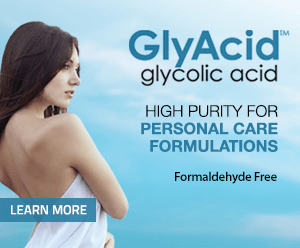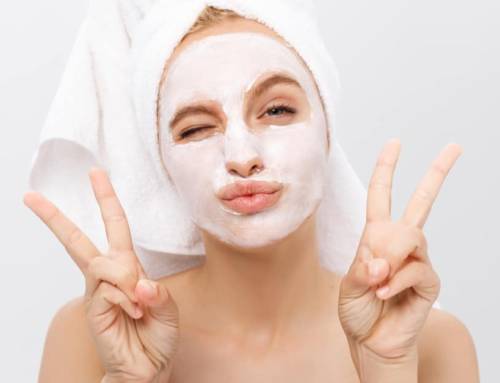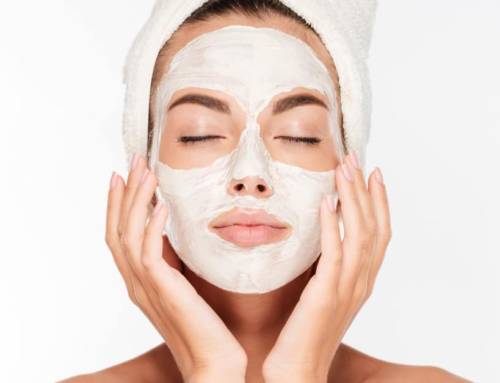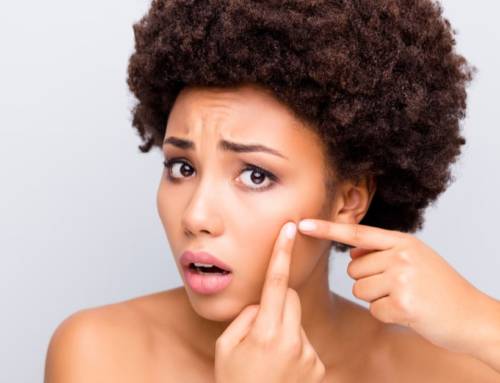Achieving Mirror Skin with Glycolic Acid
June 8, 2021

“Mirror skin is the coveted look du jour and it very much is about getting the same effect as a mirror. Mirror skin refers to skin that is dewy, glowy, hydrated and so smooth that it is almost reflective, like the reflection of the mirror,” said Joobin Jung, global marketing general manager at Vitabrid C12, to TotalBeauty.com.
In order to achieve this trending look, regular chemical exfoliation with glycolic acid is a fast and effective route to a glowing, radiant, mirror-like complexion.
What is mirror skin?
Mirror skin is skin that is so smooth and glowing it reflects light, just like a mirror. Similar to the K-Beauty look of “glass skin,” mirror skin is healthy, evenly toned, and radiant.
“While glass skin focuses on a poreless, translucent complexion without blemishes, mirror skin requires the skin to impart a natural glow that softly reflects light. It translates to more glow,” explains Eden Noronha on Femina.“The trend boasts a reflective glow that elevates your natural facial contours and catches the light just right.”
In order to achieve this trendy look, regular chemical exfoliation with glycolic acid is key. Glycolic acid can help to reduce redness and discoloration, tame the chances of acne breakouts, and promote a healthier, fresher looking complexion.
Fighting breakouts
Mirror skin is skin that looks clear and is free from redness or acne blemishes. Glycolic acid is especially helpful to achieving mirror skin because glycolic acid is a superior acne fighting ingredient.
As the most lightweight member of the Alpha Hydroxy Acid family, glycolic acid works to quickly break down the gluey bonds that trap dead skin cells and excess sebum together in clogged pores. By effectively sweeping out the debris from clogged pores, glycolic acid works to bust current blemishes and prevent future breakouts.
“For people with acne, the benefit of glycolic acid is that the peeling effect results in less “gunk” that clogs the pores. This includes dead skin cells and oil. With less to clog the pores, the skin clears,” explains Healthline.
For consumers trying to achieve mirror skin, regular use of glycolic acid can help to fight blemishes, reduce redness, and keep pores cleaner and clearer.
A more even complexion
"Skin tone is 75% about how the light hits it. When the surface is smooth and the light reflects off, skin tone appears more even."
dermatologist Neal Schultz, MD
Additionally, chemical exfoliation with glycolic acid is key to achieving the mirror skin trend as glycolic acid can help to even out skin tone.
By sloughing off older, dry skin cells from the surface of the face, glycolic acid is useful for shedding off discolored patches and promoting a more radiant complexion.
“Skin tone is 75% about how the light hits it and what the light does when it hits it. Does it reflect back or does it get scattered? When the surface is smooth and the light reflects off, your skin tone appears more even because it gets brighter and the browns are not as obvious,” dermatologist Neal Schultz, MD said to Brydie.
For a more evenly toned complexion glycolic acid can help to shed off old, dry skin and reveal softer, smoother skin that beautifully reflects the light.
Mirror, mirror
In order to achieve the trendy new K-Beauty look of mirror skin glycolic acid can help to reduce blemishes, target redness, and even out skin tone. The end result? Radiant, nearly reflective skin that glows like a mirror.







